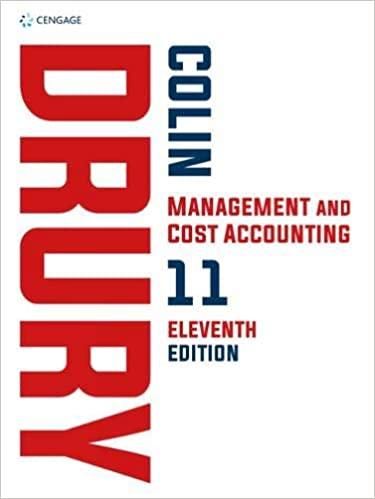Fabrix plc is a large, all-equity financed, divisionalized company that supplies the construction industry. It has a
Question:
Fabrix plc is a large, all-equity financed, divisionalized company that supplies the construction industry. It has a current cost of capital of 15 per cent. The annual performance of its four divisions is assessed by their return on investment (ROI), i.e. net profit after tax divided by the closing level of capital employed. It is expected that the overall ROI for the company for the year ending 31 December 2021 will be 18 per cent, with the brick production division having the highest ROI of 25 per cent. The brick division has a young, ambitious managing director who is anxious to maintain its ROI for the next two years, by which time they expect to be able to obtain a more prestigious job either within Fabrix plc or elsewhere. The managing director has recently turned down a proposal by the division’s finance director to replace an old machine with a more modern one, on the grounds that the old one has an estimated useful life of four years and should be kept for that period. The finance director has appealed to the main board of directors of Fabrix plc to reverse the managing director’s decision.
The following estimates have been prepared by the finance director for the new machine:
Investment cost: £256,000, payable on 2 January 2022.
Expected life: four years to 31 December 2025.
Disposal value: equal to its tax written-down value on 1 January 2025 and receivable on 31 December 2025.
Expected cash flow savings: £60,000 in 2022, rising by 10 per cent in each of the next three years. These cash flows can be assumed to occur at the end of the year in which they arise.
Tax position: the company is expected to pay 35 per cent corporation tax over the next four years. The machine is eligible for a 25 per cent per annum writing-down allowance. Corporation tax can be assumed to be paid 12 months after the accounting year end on 31 December. No provision for deferred tax is considered to be necessary.
Old machine to be replaced: this would be sold on 2 January 2022 with an accounting net book value of £50,000 and a tax written-down value of nil. Sale proceeds would be £40,000, which would give rise to a balancing charge. If retained for a further four years, the disposal value would be zero.
Relevant accounting policies: the company uses the straight line depreciation method with a full year’s depreciation being charged in both the year of acquisition and the year of disposal. The capital employed figure for the division comprises all assets excluding cash.
Required:
(a) Calculate the net present value to Fabrix plc of the proposed replacement of the old machine by the new one.
(b) Calculate, for the years 2022 and 2023 only, the effect of the decision to replace the old machine on the ROI of the to welling division.
(c) Prepare a report for the main board of directors recommending whether the new machine should be purchased. Your report should include a discussion of the effects that performance measurement systems can have on capital investment decisions.
Step by Step Answer:






